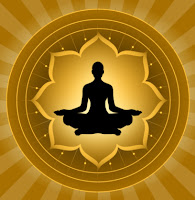By Faye Martins
When sitting through a lecture in yoga teacher training, one intern raised a hand and said: “I never knew there was mindfulness in yoga.” Over the years, a few fitness yoga teachers have said the same. In Sanskrit: smrti or smiriti means mindfulness. When a yoga teacher asks the class to focus on the present or to be present for class that is also the state of mindfulness (awareness).
Perhaps one of the greatest benefits of yoga teacher training is that of mastering mindfulness. It can be easy to overlook all the aspects of your life that awareness improves. The process of connecting your mind with your body is really the heart of what yogic philosophy. Ancient practices of yoga training were centered on meditation, and improving the mind to body connection. The perfect yoga class will have students engaging in that same practice.
Benefits of Being More Mindful
As yoga is practiced on a daily basis, your body begins to change. You become more aware not just of your body but of your surroundings and how they affect your day to day activity. You realize all the things you may be doing to sabotage your health, and make the changes necessary to become more completely healthy. Mindful individuals are less stressed as they approach obstacles with ease and conquer them with much less effort. Additionally, intuition is enhanced as you begin to see signs that may not be so apparent to the average person. Developing a higher level of awareness and intuition can save you much grief in life.
Yogic Practice
When it comes to the actual practice of mindfulness, it is important to focus on the meditative side of the spectrum. It is amazing what the mind and body can accomplish when pushed to their limits. Combining the physical and the mental in a yogic routine is basically giving us complete holistic health. For an advanced practitioner, it is possible be mindful and concentrate on multiple subjects at the same time, allowing focus on objects, emotions, sensations, and thought patterns all at once. This may not be suggested for everyone, but in this day and age who doesn’t multitask? There are three skills to teach when it comes to mastering mindfulness. They are non-attachment, focus, and expansion. Students should focus on the movements, let go of stray thoughts, and be willing to open their minds to new levels of consciousness.
Notes for Yoga Teachers
One point Marie Jerard made me aware of was to see the obvious in subtle actions people make. This is a method to practice for expanding your consciousness for practical use. Paul often says: “She is my eyes and ears.” The truth is: Both of them have equally explained non-attachment, focus, and expansion in detail. We have our limits when faced with non-attachment, because most of us are attached to someone or something. Paul often explains the advantage of non-attachment to outcome, because it gives us mental clarity to see the many possibilities and the ability to be prepared for changes regardless of the exact outcome.
Many public and private schools are beginning to implement yoga training in the school curriculum to promote mindfulness. They’ve noticed improvement in imagination, empathy, self-awareness, and self-esteem. Studies show that practicing mindfulness led to a decrease in overall anxiety. It just goes to show it is never too early, or too late to practice yoga training and improve your overall health and well-being. Yogic methods truly changes lives and makes us better individuals and perhaps, better citizens.
© Copyright 2012 – Aura Wellness Center – Publications Division
To see our selection of Yoga teacher training courses, please visit the following link.
Free Report, Newsletter, Videos, Podcasts, and e-Book, “Yoga in Practice.”
If you are a Yoga Teacher, studio manager, blogger, e-zine, or website publisher, and are in need of quality content, please feel free to use my blog entries (articles). Please be sure to reprint each article, as is, including the resource box above. Namaste!






